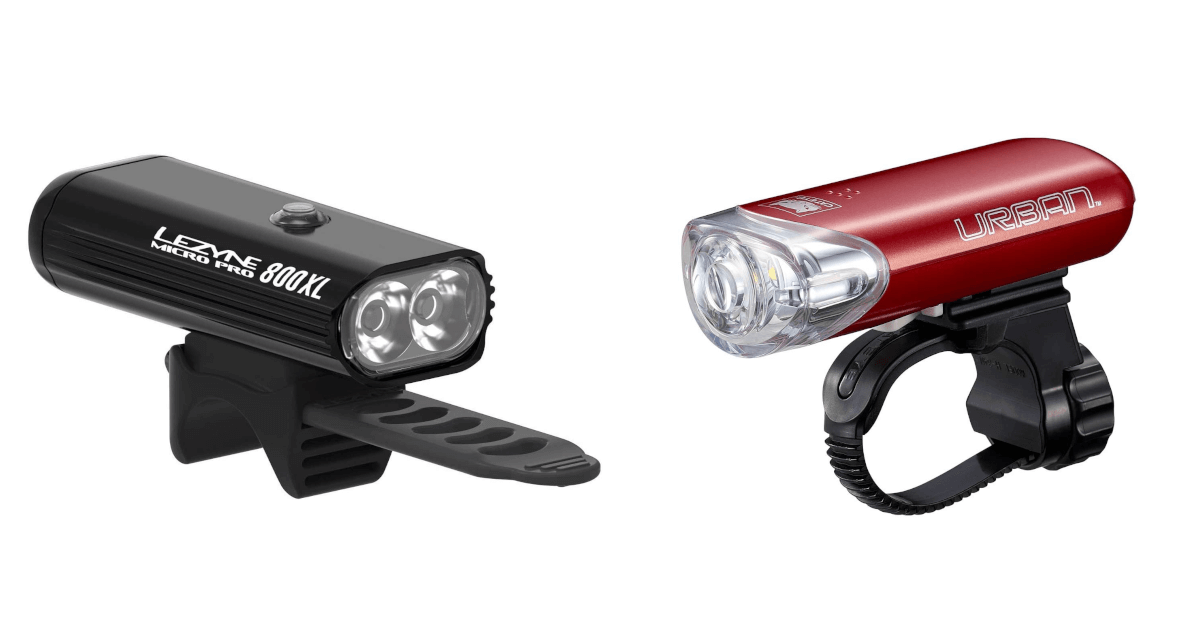Advantages and disadvantages of battery-powered bicycle lights
Battery-powered bicycle lights are capable of carrying more power than batteries and can shine a strong light for a long time. Most of the latest bicycle lights are transitioning to battery-powered lights.
Advantages include the following points.
- cost-effective because there is no battery cost
- brightness/brightness does not diminish easily
- long time use
The battery type is best if you run at night because it has a battery that is larger in size than batteries, so it lasts longer and can provide brightness that batteries cannot provide. The high cost performance of the battery type is also good, as it can be recharged via USB or other means when the battery runs out.
On the other hand, the battery type has the following disadvantages.
- it takes time to recharge
- cannot be used immediately when the battery charge runs out
(1) Battery needs to be replaced when it reaches the end of its useful life
Especially on long rides, such as those that run from night to morning, it will be necessary to bring a spare light because the battery may run out at the end of the ride.
In addition, “the need to replace the battery when it reaches the end of its useful life” is a hidden and surprisingly large disadvantage of battery-powered lights.
Advantages and disadvantages of battery-powered bicycle lights
Battery-powered bicycle lights are becoming much less common these days. However, there are some unexpected advantages.
- ready for immediate use by replacing batteries
- if you run out of electricity, you can use spare batteries right away
- if you forget to bring spare batteries, they are easily available at convenience stores
- can be used repeatedly as long as it does not break down
The biggest advantage is ease of use. Batteries can be used as soon as they are inserted, and in the unlikely event that they run out, spare batteries are always available at convenience stores, making it easy to procure batteries on the go. Battery-powered cameras are more resistant to problems.
On the other hand, the disadvantages are as follows
- insufficient brightness (about as bright as a spare light)
- cost of batteries
In terms of brightness in particular, it inevitably loses out to battery-powered models that can produce high power, which can be worrisome at night, especially when driving on roads with few streetlights.
The cost of batteries can be reduced to some extent by using rechargeable dry cell batteries such as eneloop.
Comparison of advantages and disadvantages of battery-powered and battery-operated bicycle lights
Based on the advantages and disadvantages we have seen so far, let us compare the characteristics.
Battery-powered bicycle lights are popular these days, but in this way, we can see that battery-powered lights are surprisingly not too bad. Especially when you consider the speed of use and the lifespan of the unit, you will find that it is also surprisingly cost-effective.
Battery-powered bicycle lights are the best for main bicycle lights
Considering brightness, brightness maintenance, and usable time, it is no exaggeration to say that battery-powered bicycle lights are currently the only choice for main bicycle lights. Especially for daily use, a battery-powered bicycle light will last several days once it is charged, so there are almost no situations in which a battery-powered bicycle light would be a problem.
However, if you do not choose a manufacturer carefully, the battery or battery circuit may fail, so choose a light from a reliable manufacturer such as Cat Eye or Resine.
Battery-powered is ideal for spare light or daylight on long rides
A dry cell bicycle light is best used as a backup light because of its ease of use and the ease of carrying spare batteries. For long rides where there is a possibility of riding after dark, a spare bicycle light is a must-have item, so a lightweight and “reliable” dry-cell battery bicycle light is a reassuring “spare”.
Also, in situations that do not require much brightness, such as daytime cycling, it is a good idea to use a dry cell bicycle light as a daylight to make your presence known on the road. However, if you are likely to go into dark places such as tunnels, you should also carry a battery type and switch between the two depending on the scene.
